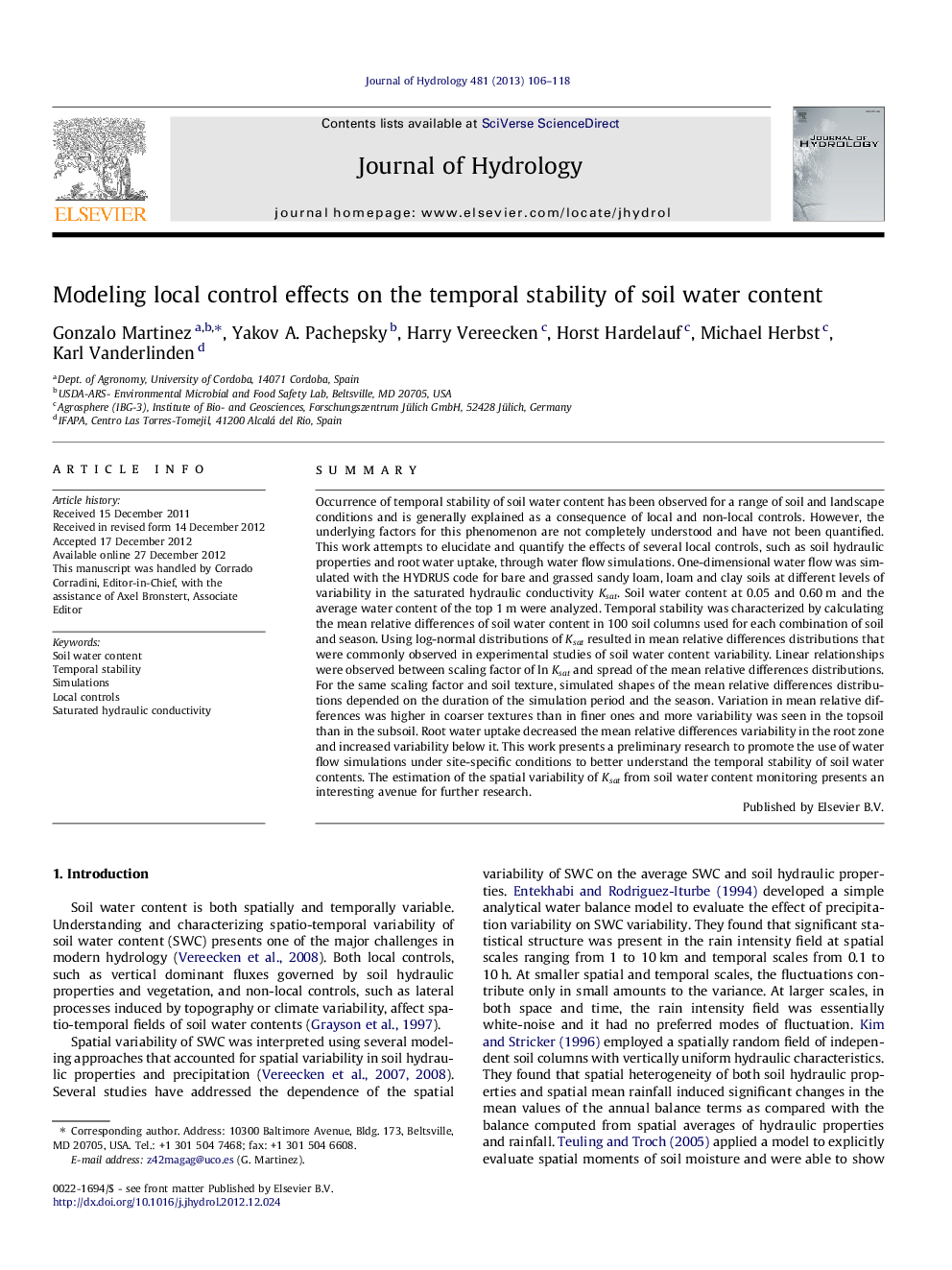| Article ID | Journal | Published Year | Pages | File Type |
|---|---|---|---|---|
| 4576480 | Journal of Hydrology | 2013 | 13 Pages |
SummaryOccurrence of temporal stability of soil water content has been observed for a range of soil and landscape conditions and is generally explained as a consequence of local and non-local controls. However, the underlying factors for this phenomenon are not completely understood and have not been quantified. This work attempts to elucidate and quantify the effects of several local controls, such as soil hydraulic properties and root water uptake, through water flow simulations. One-dimensional water flow was simulated with the HYDRUS code for bare and grassed sandy loam, loam and clay soils at different levels of variability in the saturated hydraulic conductivity Ksat. Soil water content at 0.05 and 0.60 m and the average water content of the top 1 m were analyzed. Temporal stability was characterized by calculating the mean relative differences of soil water content in 100 soil columns used for each combination of soil and season. Using log-normal distributions of Ksat resulted in mean relative differences distributions that were commonly observed in experimental studies of soil water content variability. Linear relationships were observed between scaling factor of ln Ksat and spread of the mean relative differences distributions. For the same scaling factor and soil texture, simulated shapes of the mean relative differences distributions depended on the duration of the simulation period and the season. Variation in mean relative differences was higher in coarser textures than in finer ones and more variability was seen in the topsoil than in the subsoil. Root water uptake decreased the mean relative differences variability in the root zone and increased variability below it. This work presents a preliminary research to promote the use of water flow simulations under site-specific conditions to better understand the temporal stability of soil water contents. The estimation of the spatial variability of Ksat from soil water content monitoring presents an interesting avenue for further research.
► We simulated soil water flow in bare and grassed soil columns of three textures. ► Typical features of soil water temporal stability were recovered in simulations. ► Simulated duration and season affected the temporal stability of soil water contents. ► Spatio-temporal variations in soil water correlated with soil hydraulic conductivity.
